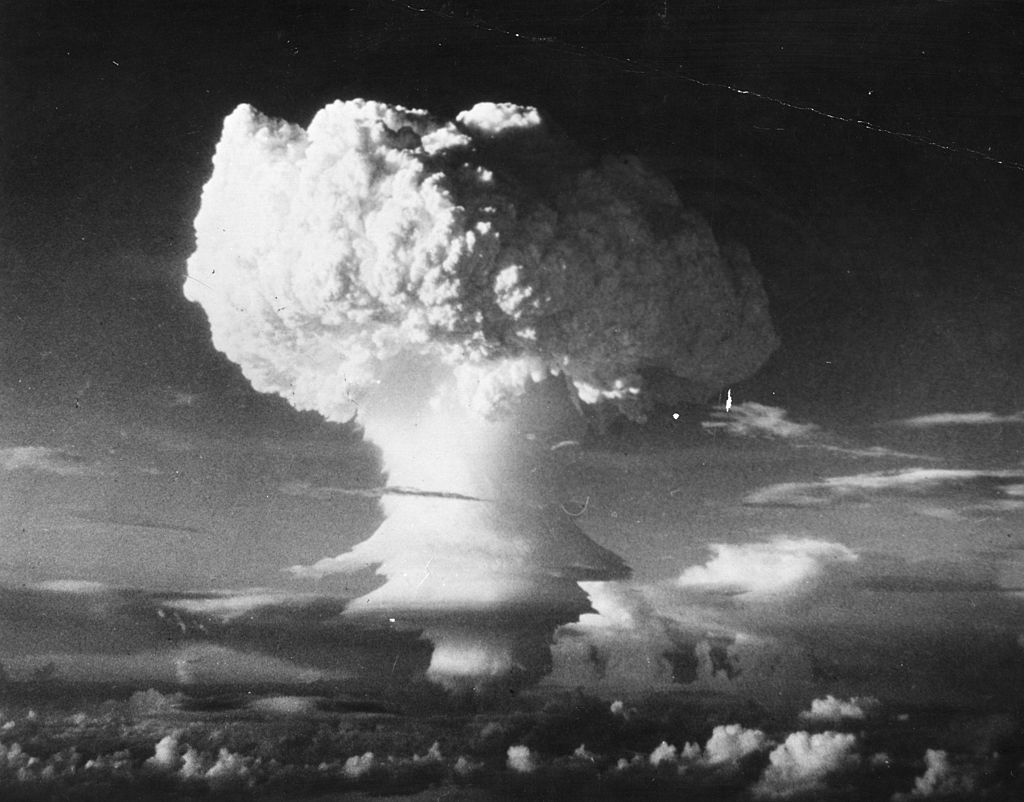
Nuclear Explosion Why Atomic Bombs Make Mushroom Cloud Science Times
Thu 4 Nov 2021 02.00 EDT Sixty-nine years ago, a new type of cloud was the focus of scientific research: the mushroom cloud produced by cold war atomic tests. Ivy Mike, which took place on 1.

These are the 12 things most likely to destroy the world Vox
July 1946: A mushroom cloud forms after the initial Atomic Bomb test explosion off the coast of Bikini Atoll, Marshall Islands. In a nutshell, it's because the bomb releases massive amounts.
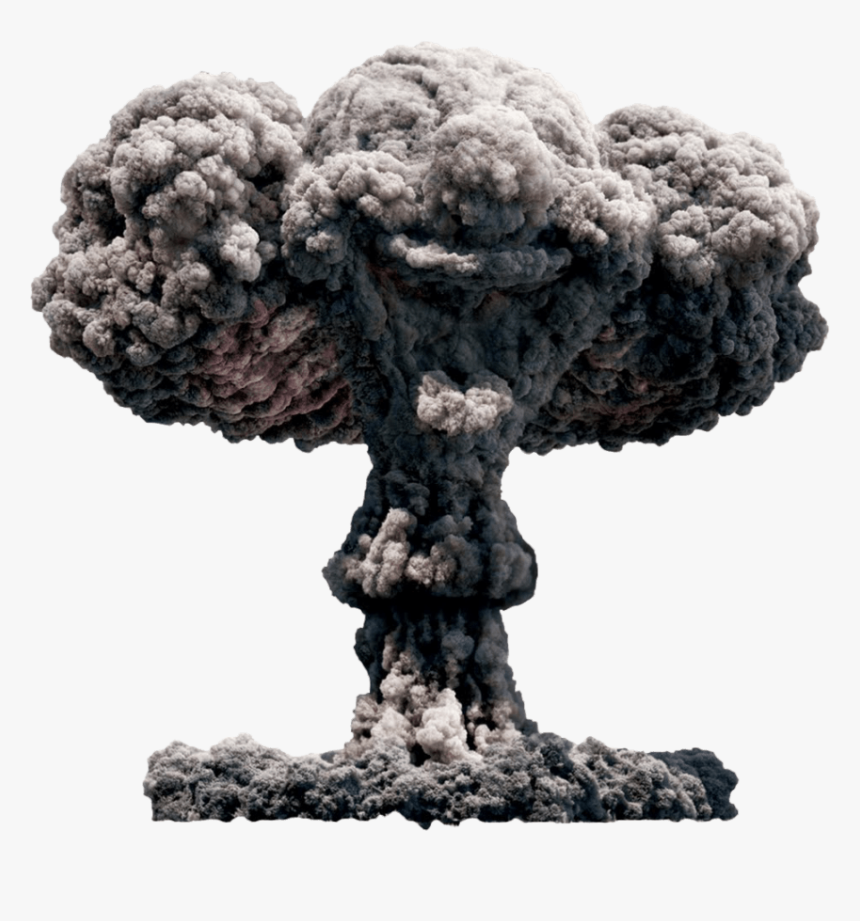
Nuclear Explosion Png Mushroom Cloud Png, Transparent Png kindpng
The cumulonimbus flammagenitus cloud ( CbFg ), also known as the pyrocumulonimbus cloud, is a type of cumulonimbus cloud that forms above a source of heat, such as a wildfire or volcanic eruption, [5] and may sometimes even extinguish the fire that formed it. [6] It is the most extreme manifestation of a flammagenitus cloud.

View of the mushroom cloud caused by the detonation and explosion of... News Photo Getty Images
A mushroom cloud is the iconic and terrifying result of a thermonuclear explosion, but actually a mushroom cloud can be created by any massive release of heat, such as from a volcano or from something like the 2020 Beirut explosion.

Why Does A Nuclear Explosion Create A Mushroom Cloud? » Science ABC
Mushroom clouds are clouds of smoke and debris that move through the air following an explosion. These types of clouds are formed not only after nuclear explosions, but also after any event that.

Why Does a Mushroom Cloud Look Like a Mushroom? Britannica
The picture is a rare glimpse of the bomb's immediate aftermath, showing the distinct two-tiered cloud as it was seen from Kaitaichi, part of present-day Kaita, six miles east of Hiroshima's.

Watch A Bleak Film Of Every Atomic Explosion Since 1945
What's A Mushroom Cloud? A mushroom cloud is an iconic mushroom-shaped cloud of smoke/debris that forms in the sky following an extremely large explosion.

Mushroom cloud from atomic bomb over Nagasaki, Japan, 9 August 1945 The Digital Collections of
At 2:45 a.m. on Monday August 6, 1945, three American B-29 bombers of the 509th Composite Group took off from an airfield on the Pacific island of Tinian, 1,500 miles south of Japan. Colonel Paul Tibbets piloted the lead bomber, "Enola Gay," which carried a nuclear bomb nicknamed "Little Boy."

Hiroshima 70th Anniversary What to Know About Nuclear Weapons in 2015 NBC News
Written by Nicolas Rapold Witnesses to the Trinity test, the inaugural atomic bomb experiment in 1945 portrayed in "Oppenheimer," described the billowing blast in various ways. It was said to resemble a chimney, a parasol, a raspberry and — shades of science fiction — a "convoluting brain."

Why are atomic bomb clouds mushroomshaped?
A mushroom cloud is a distinctive mushroom -shaped flammagenitus cloud of debris, smoke, and usually condensed water vapor resulting from a large explosion. The effect is most commonly associated with a nuclear explosion, but any sufficiently energetic detonation or deflagration will produce the same effect.
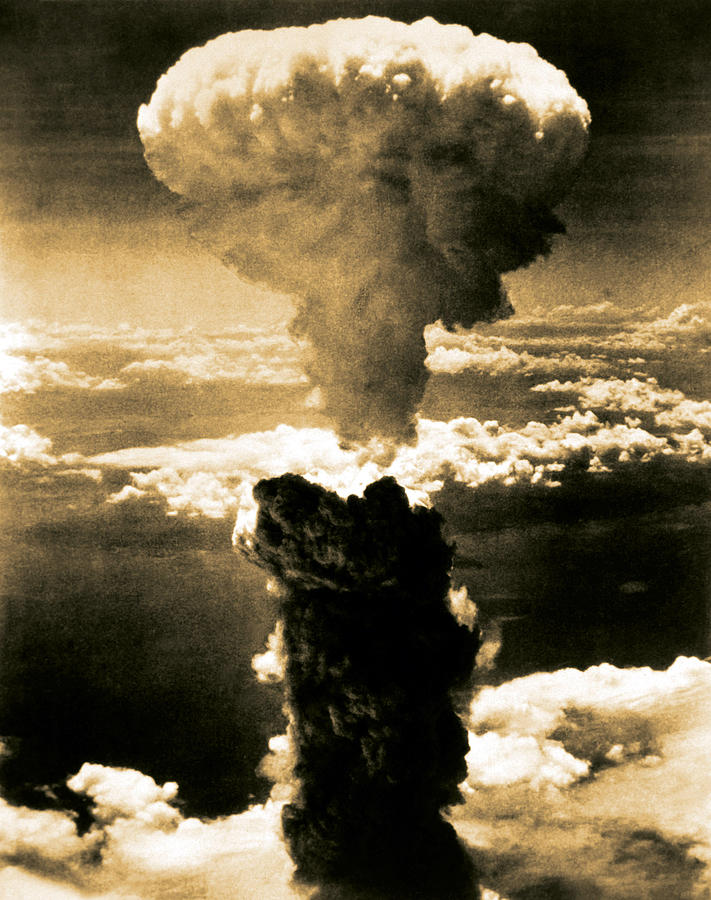
Atomic Bomb. A Mushroom Cloud Rises Photograph by Everett Pixels
The rising mushroom cloud over Nagasaki, a few minutes after the nuclear bomb was detonated, August 9, 1945. Picture taken from Koyagi-jima, 5 miles from the center of Nagasaki. This is believed to be the earliest photograph from the ground, 15 minutes after the plutonium bomb detonated over Nagasaki. The destruction was so incredible that.

Wallpaper Nuclear bomb explosion, mushroom cloud 3840x2160 UHD 4K Picture, Image
Since the explosion formed a mushroom cloud, many Twitter users questioned whether the blast was a result of an atomic bomb. And indeed, for most people, images of a mushroom cloud rising over the.
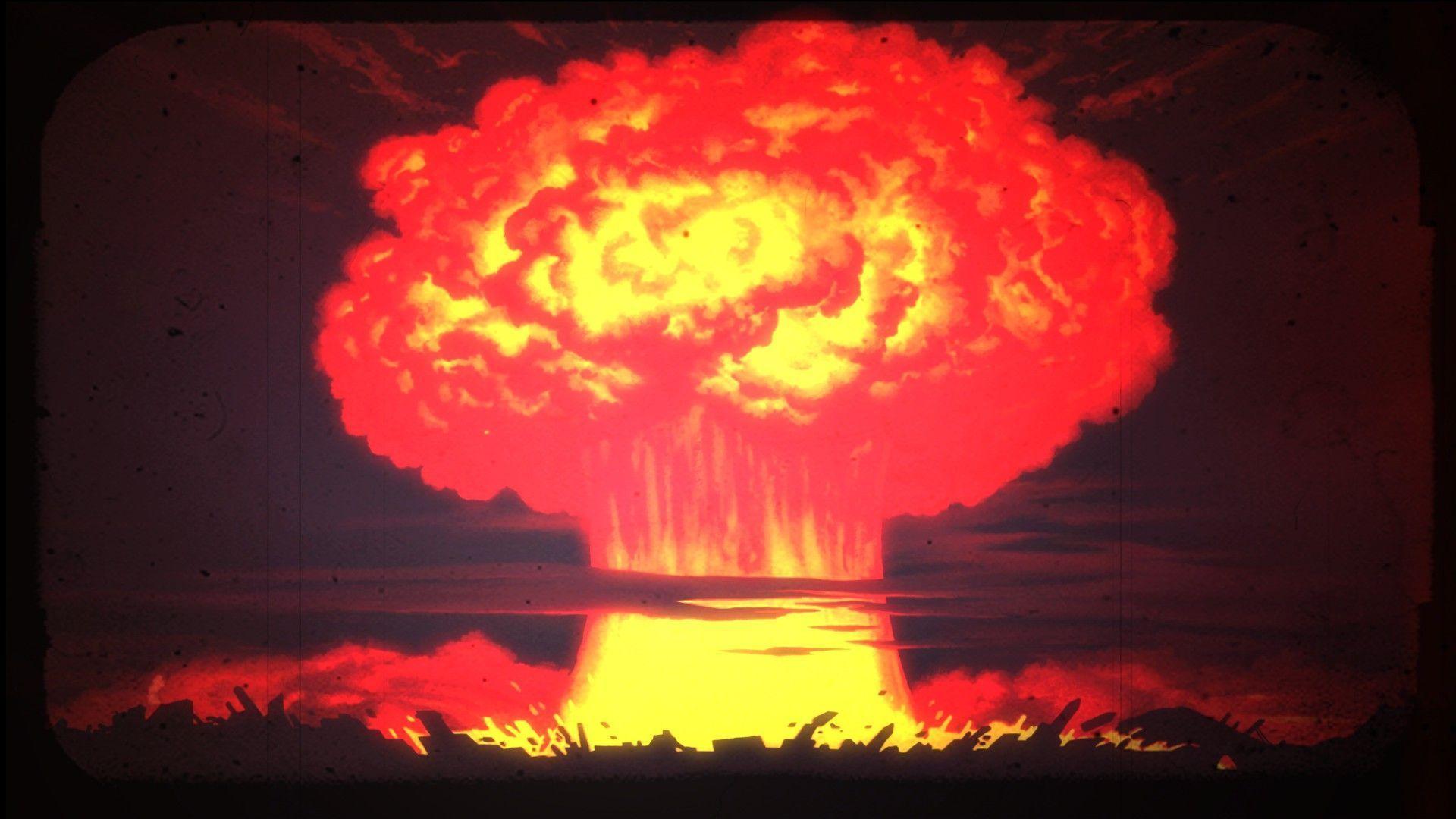
Mushroom Cloud Wallpapers Wallpaper Cave
The second atomic bomb to detonate in the United States was triggered at 5:45 a.m. on January 27, 1951 (Trinity, the first, exploded near Alamogordo, New Mexico, on July 16, 1945), and at the.

MUSHROOM CLOUD FROM ATOMIC BOMB SET OFF IN SOUTH PACIFIC DURING... News Photo Getty Images
The mushroom cloud near Hiroshima's ground zero after the atomic bombing on Aug. 6, 1945. Gonichi Kimura/Hiroshima Peace Memorial Museum A view of the center of Hiroshima from a police station.

Eon Images Mushroom cloud from test of first hydrogen bomb
published 25 July 2021 What forms this iconic shape? The Baker Day explosion at Bikini Atoll in the Marshall Islands, as recorded by an automatically operated camera on a nearby island. Notice the.
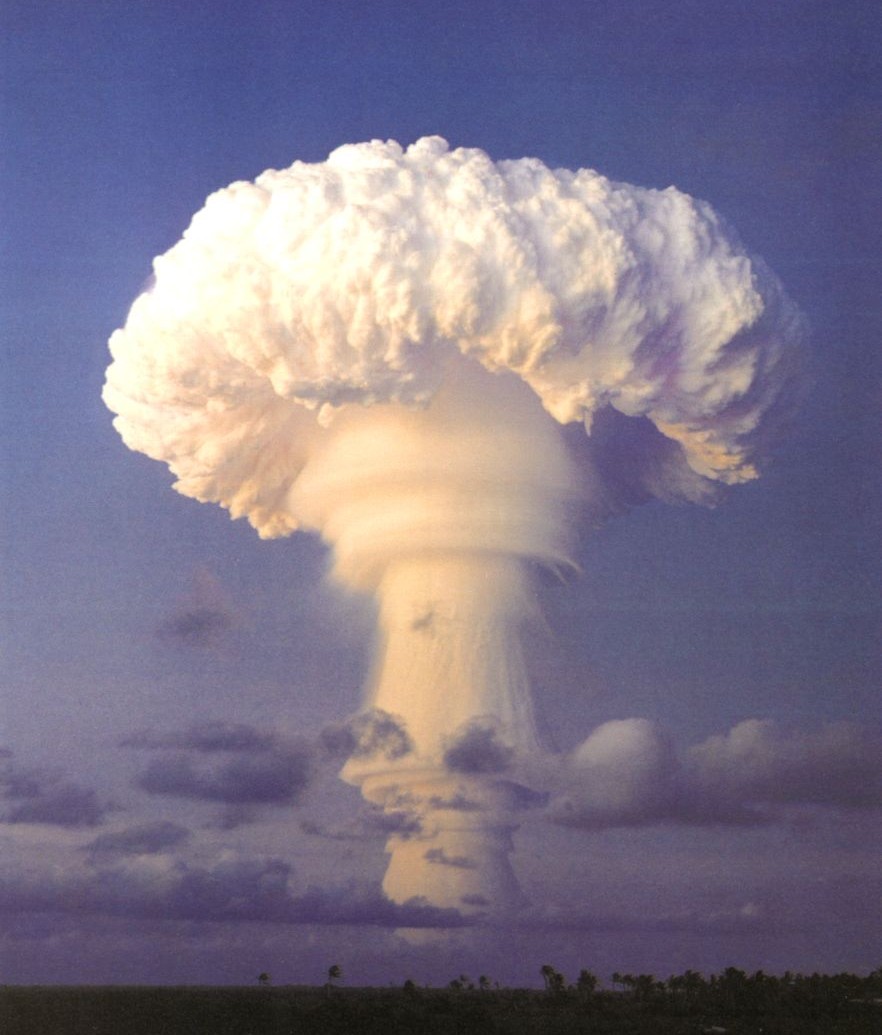
The Mushroom Cloud End Times Truth
Nuclear Explosion: Mushroom Cloud. A nuclear blast releases massive amounts of energy which is dissipated as fireball, blast forces/waves, prompt radiation, light and heat (thermal energy), and delayed ionizing radiation dose (fallout) . Fireball. Vaporization of matter by tremendous heat within fireball. Located at the epicenter of the explosion.